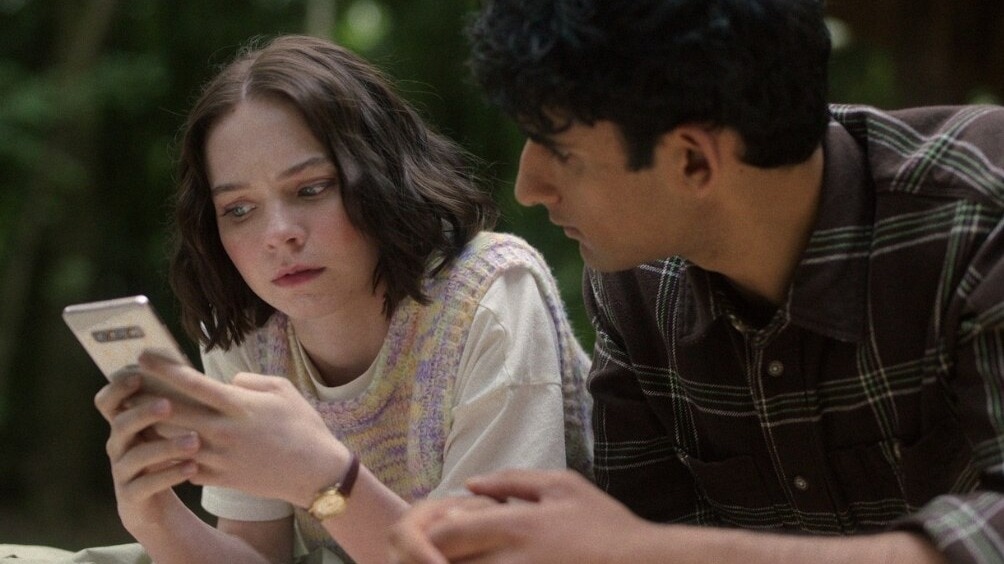Why bloomscrolling is the internet’s new antidote to endless-feed fatigue
Because sometimes the only way to survive the chaos is to scroll like you actually care about your sanity.

Every time I open Instagram, it feels like walking into a booby-trapped funhouse run by an intern who has completely checked out. You pick up your phone to kill thirty seconds and suddenly you’re watching two men on a New York subway giving hot takes, followed by someone crying in their parked car about a breakup, followed by a chart about the economy that looks like a seismograph mid-quake. All of it neatly labelled as “personalised content,” which is really just the algorithm guessing who you are based on the last seven unhinged things you scrolled past. People pretend they’re fine, but everyone (including me) can feel their sanity leaking out. The infinite feed has turned regular Instagram users into tired spectators who doom-scroll simply because the alternative is confronting their screen-time report—and no one is brave enough for that.
Weirdly, this is where bloomscrolling enters the chat, acting almost like comic relief. It takes the same chaotic habit and flips it into something steadier. Instead of surrendering to whatever emotional rollercoaster the algorithm throws at you, bloomscrolling is about curating your feed with intent. You move towards content that lifts you up instead of wearing you down. It’s the opposite of doomscrolling’s passive slide into despair—a conscious choice to look at things that nurture your mind rather than shrink it.
Bloomscrolling works because it quietly pushes back against the machinery that keeps feeds loud, fast and relentlessly negative. Algorithms thrive on friction and unease. The more overwhelmed you are, the longer you stay. Outrage, panic, heartbreak, ambiguity—it’s all fuel. Bloomscrolling interrupts that. When you scroll back up or linger on posts that feel warm, thoughtful or pleasant, you’re breaking the pattern the platform expects. You feed it signals that don’t match its doom-first predictions. Even small moments of slowing down disrupt the emotional escalation the feed relies on.
And that disruption has a psychological payoff. Re-reading a caption, revisiting something you saved, or returning to a post that made you feel grounded creates a small sense of agency. It feels like choosing your feed instead of absorbing it. There’s satisfaction in steering the experience rather than being dragged through it. It mirrors earlier “slow media” ideas about lingering over art, writing or film—translated into a digital space that barely allows slowness. Whether bloomscrolling is a fleeting trend or a sign that we crave more mindful digital habits, one thing is clear: people aren’t tired of the internet itself; they’re tired of the way it treats their attention like a power grid. They’re desperate for even the smallest escape.
Clinical psychologist Mehezabin Dordi of Sir HN Reliance Foundation Hospital explains that traditional scrolling hooks us through novelty and unpredictability. “Each new post provides a small, unpredictable dopamine hit,” she says, which is why people mindlessly slide deeper into their feeds even when they feel drained. Bloomscrolling disrupts that loop. When you revisit earlier posts or return to something you saved, “you move from passive consumption to active choice, which re-engages the prefrontal cortex.” That shift breaks the automatic “what’s next?” chase and moves you closer to “what matters to me?” It softens the compulsive edge by giving you a sense of control that the feed rarely offers.
There’s also a quieter emotional impact. Dordi notes that intentional scrolling, especially when revisiting grounding posts or memories, activates “serotonin-linked pathways associated with contentment and emotional stability.” The experience becomes less about stimulation and more about connection. You leave your feed feeling steadier, not scattered. For some, bloomscrolling becomes a light digital-mindfulness practice. “It has the potential to be a digital mindfulness practice,” Dordi says, “but only when paired with reflection, purpose and emotional awareness.”
Why slowing down the scroll can calm the nervous system
Psychiatrist Dr Ashutosh Shah of Sir HN Reliance Foundation Hospital says the mental load of endless feeds shows up in younger users as “constant anxiety, cognitive confusion and a feeling of being switched on all the time,” because the brain learns to operate in threat-detection mode. Bloomscrolling acts as a small interruption to that loop. “When you slow down and choose what to look at, you activate the prefrontal cortex, which pulls you out of compulsive scrolling,” he says. This shift weakens the dopamine chase that algorithms rely on. The body also moves out of a stress response: “You’re switching from sympathetic activation to parasympathetic calm, which brings in neurotransmitters like serotonin and oxytocin.” Over time, it becomes a behavioural adjustment. “Bloomscrolling is the brain praising you for putting your mental health first,” Dr Shah says.
For Gen Z and Gen X, this technique fits into a much larger story about living with a level of digital noise no generation before them has experienced. They grew up with phones that never stop ringing, news cycles that never pause and feeds that behave like malfunctioning slot machines. So yes, bloomscrolling feels like a survival instinct. Instead of running on the algorithm’s built-in stress chemistry, young people are choosing the softer corners of the internet because everything else feels engineered to drain them. You see it in the way they gravitate toward quiet videos, gentle routines or posts that feel like a digital deep breath. Bloomscrolling fits perfectly into that shift: a small, intentional break from the chaos that doesn’t require a full digital detox—which no one actually does.
In the end, bloomscrolling doesn’t try to fix the internet or fight the platforms designed for chaos. It works because it stays small and human. It gives you a moment of slowness inside a feed that moves too fast. A chance to choose one gentle thing instead of letting the noise choose for you.
Lead Image: Netflix
Also read: Is digital culture is making rejection feel worse for young people?
Also read: Why Gen Z is swapping the hustle culture for slow mornings instead
more from Life

Why Gen Z is swapping the hustle culture for slow mornings instead

Low-maintenance friendships are on the rise and here's why we’re apart but closer than ever

The surprising truths about Gen Z—the world’s favourite punching bag

‘Airport divorce’ is the new travel trend couples are taking off with—and here's why it makes total sense

Gen Z terms are hot, but here are basic words that say “manners”!

Belonging vs bureaucracy—has proving who you are become an unfair battle for queer and trans lives?

7 everyday skincare habits you are missing!

Is digital culture making rejection feel worse for young people?

The ‘robe theory’ is here to remind you that 'rest' is the new 'rich'

Blood moons, retrogrades, and cosmic chaos—why we love blaming the universe for all our bad decisions
